In some military and police videos, in addition to fully armed soldiers, a variety of equipment, and handsome firearms, we can often see an important piece of equipment that is easily overlooked: gloves.
Some friends may wonder: Are gloves important? The answer is yes. Gloves can provide effective protection for soldiers' hands, away from the adverse effects of high temperature, low temperature, impact, scratches, and wear. Whether in mission combat or competition shooting, gloves are an important part of safety equipment. Like protective armor, gloves are also an extension of it, but in addition to providing protection, gloves also need to consider flexibility and tactics.
How to choose gloves that suit you?
Many gloves are on the market now. Before buying gloves, we can consider the following factors according to our environment and the tasks to be performed:
1. Do you need a full-finger or a half-finger?
Half-finger gloves are the first choice for many competitive shooters with sweaty hands. Although many competitive shooters do not wear gloves, the design of half-finger gloves can meet the user's need for flexibility to the greatest extent. While protecting most of the palms, the fingers can also maintain a considerable degree of flexibility for weapons, magazines, and ammunition. touch. (Many competitive shooters also choose to cut off one or two fingers of the gloves when the weather is cold. In addition to heat preservation and heat insulation, it is also convenient to increase the touch, so there are half-finger gloves. And because of its simple structure, Breathable and convenient, because for friends with sweaty hands, it is also important to prevent sweat from accumulating around the fingers and palms.
2. Whether there is a need for hard joints. Some gloves are specially designed for military and police personnel or outdoor cyclists, such as the hard shell of hard joint gloves, which can help protect users in hand-to-hand combat, falls, or heavy loads. Generally speaking, the hard part of hard joint gloves is made of thermoplastic rubber (TPR), and also made of carbon fiber. In addition to being lightweight, it also has excellent wear resistance and weather resistance (applied to outdoor weather resistance Climate tests, such as tolerance to comprehensive damage caused by light, cold and heat, wind and rain, bacteria, etc.)
3. Whether it needs to have a warming effect. (Cold Weather Warm Tactical Gloves) There are many operations that are carried out in the severe cold and harsh environments. Conventional tactical gloves can naturally provide sufficient protection at normal temperatures, while warm tactical gloves are designed for particularly cold outdoor environments. Although this kind of gloves can keep hands warm and dry. However, its design and material requirements are relatively high. If it is too bloated, it will limit the flexibility of the palm and affect the grip.
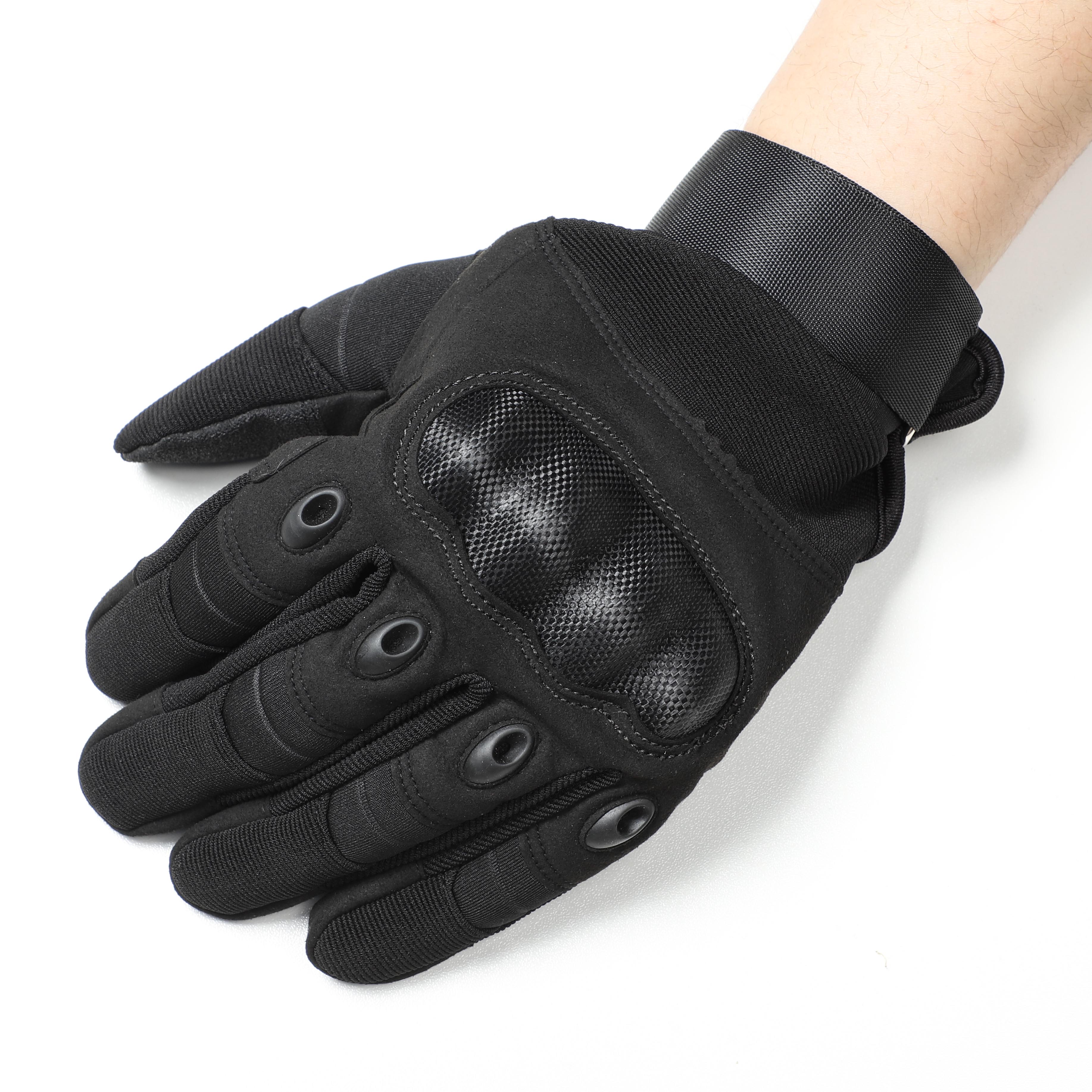
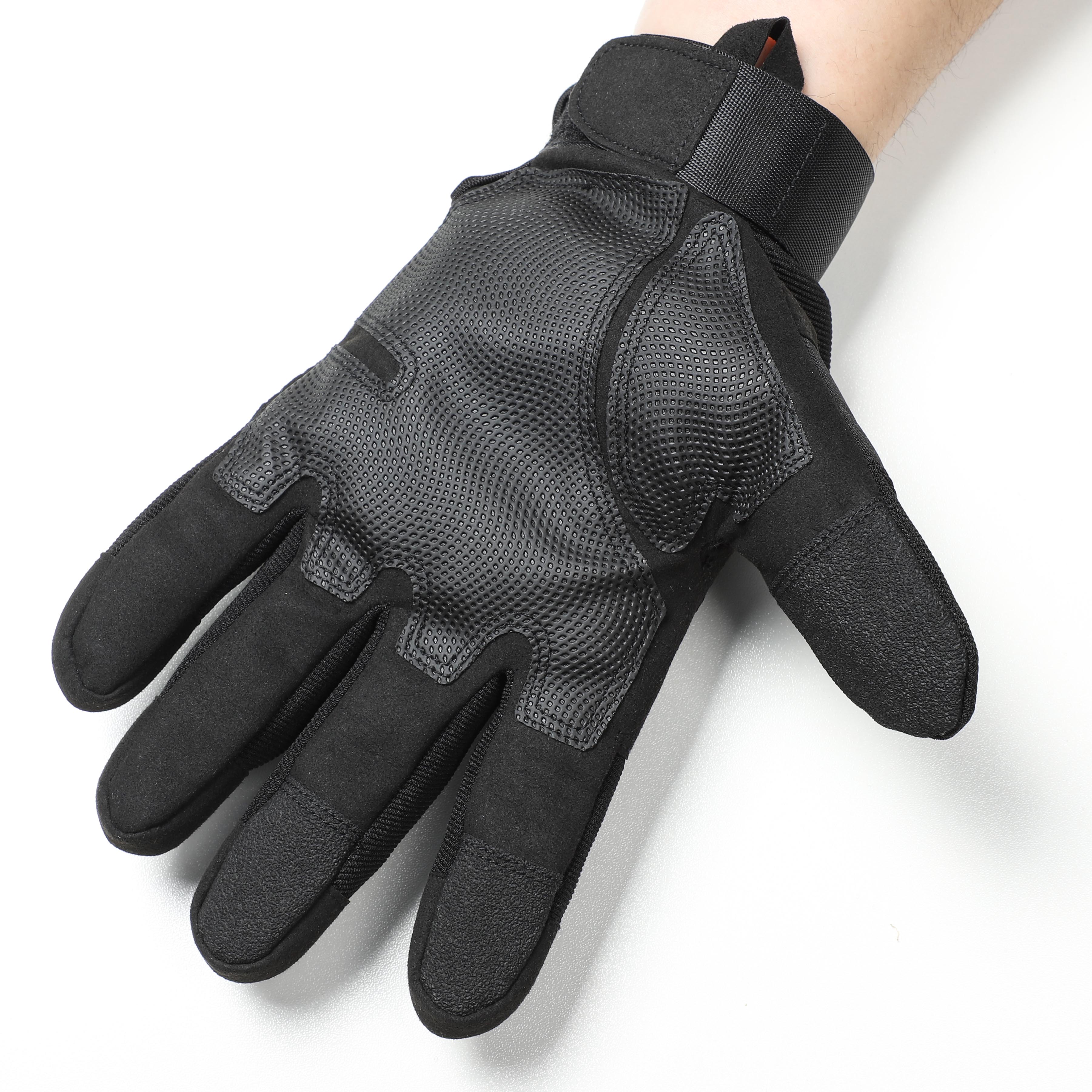
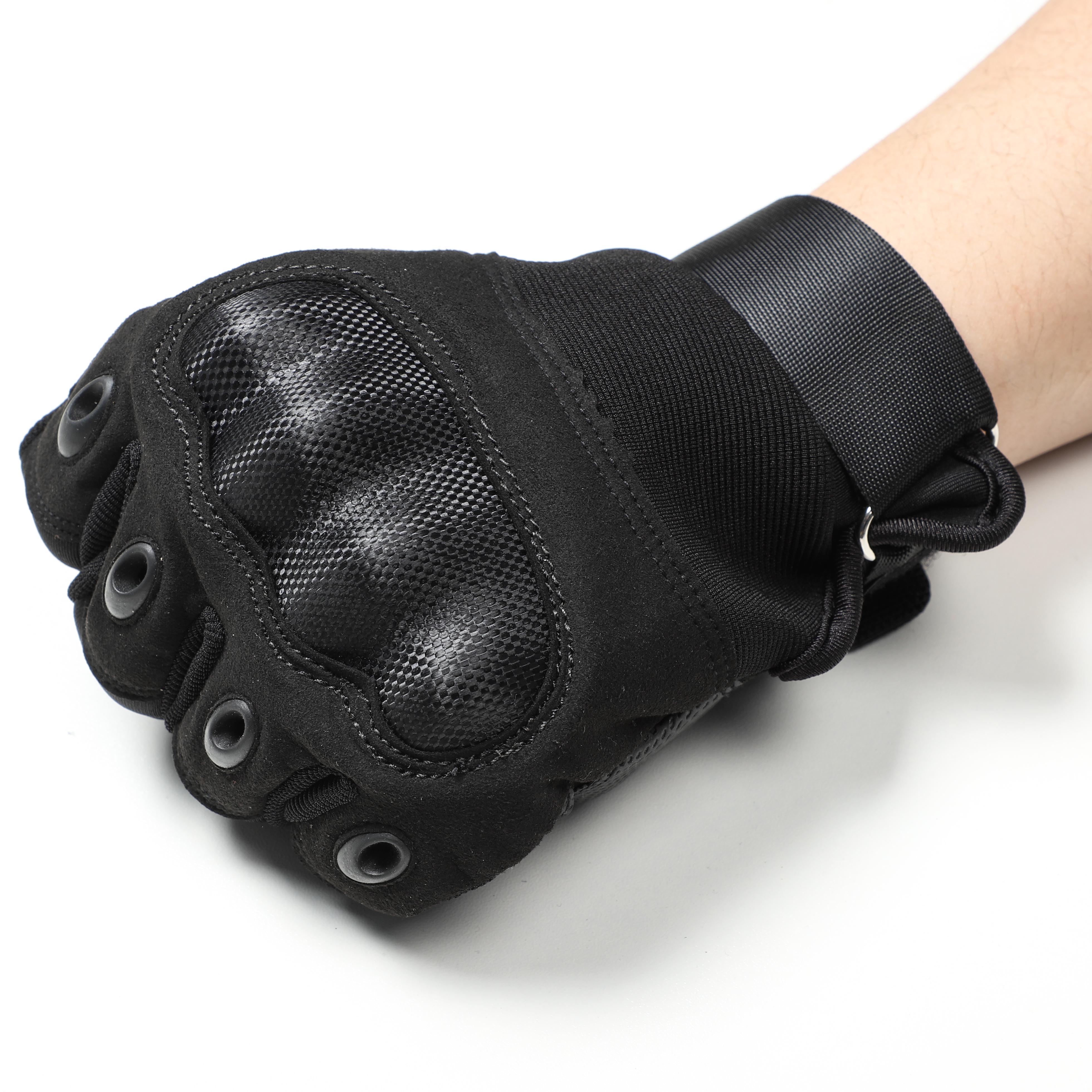
4. Whether the wrist strap is adjustable. (Gloves with adjustable wrist strap)
This is important for a glove, the better the wrist of the glove fits your body, the more natural it will feel for the user when shooting or using other gear. In modern tactical gloves, the wrist straps are generally fixed by the hook surface and the rough surface of the Velcro for quick adjustment. In addition to the fixing function, these wrist straps are also convenient for the user to take off or put on quickly.
5. Whether you need to be able to touch the screen. (Gloves that can use the touch screen)
With the increasing popularity of modern large-screen smartphones, the requirement for gloves to touch the touchscreen has gradually surfaced. After all, taking off gloves in order to use mobile phones or other touch-screen devices may waste precious time. Therefore, in order to solve this problem, the fingertips of many gloves are designed to be compatible with touch screens, so that users can use touch screen devices without taking off the gloves.
6. Whether a palm rest is required. (Palm pad for tactical gloves)
First of all, the most important purpose of tactical gloves is still to provide protection. Therefore, many tactical gloves will have pads sewn on the palm to prevent the impact of hard objects (such as hammers) and sharp objects (such as glass slag), as well as burns from high-temperature objects (such as gun barrels). And since the pad can be made of high-friction materials such as rubber, it can also increase the grip, making it easier for users to hold items such as firearms and weapons.
7. Breathability (Tactical gloves with high air permeability)
Is the breathability of gloves important? Actually, very important. If the air permeability of a pair of gloves is not good, the user's hand will heat up and sweat inside the glove when using it; it is okay to cause the hand to slip, but if there are wounds on the palms and fingers, it is likely to cause inflammation of the wound. This is why many new tactical gloves now avoid using leather, because although genuine leather provides good protection and durability, breathability is a problem, and the cost and price of leather gloves are also not low. On the other hand, nylon and polyester gloves are very breathable, absorbing moisture while also helping to breathe and reduce sweating.
In addition to the above characteristics, due to the difference in different materials of tactical gloves, some materials are more durable, breathable, and protective than others.
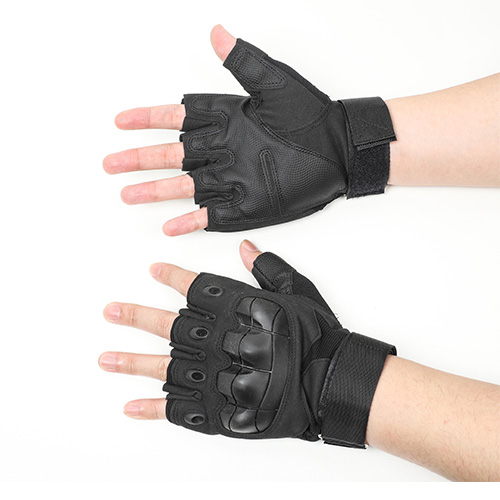
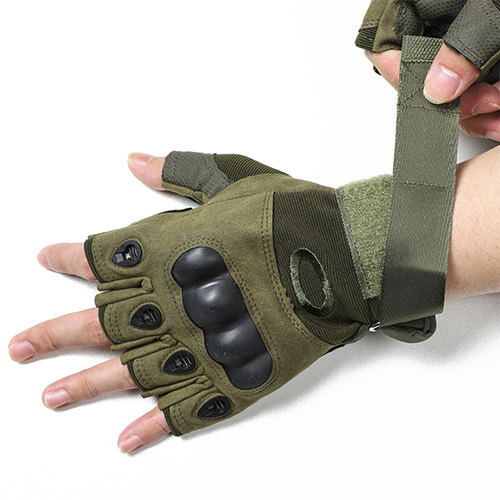
What are the glove materials?
Therefore, to decide which glove material is best for you, first consider what activity you will be using the glove for, and then consider which material is best for that activity. Generally speaking, the materials of gloves are as follows:
1. Leather. Leather is still a very common tactical glove material. Made of cowhide, sheepskin, or goatskin, it is soft, comfortable, and waterproof. Because of its excellent durability, it is also often made into boots, bags, gun holsters, and other equipment, but because its ductility is not as good as spandex, it does not fit the hand like spandex.
2. Kevlar material. Gloves with a Kevlar shell or material are usually good at resisting scratches and cuts and can protect hands from blades or other sharp-edged objects. It is also a good choice for military and law enforcement personnel.
3. Neoprene, also known as diving material, is generally used to make diving suits. Because it is an excellent waterproof material. Neoprene is stable and also a good insulator. The tactical gloves made of neoprene are top-notch waterproof.
4. Rubber. As a versatile waterproofing material, rubber is often used as a liner for impact protection. In tactical gloves, it is common to see the rubber on the knuckles, as it fills the palm while also improving friction for easy grip.
5. Nylon. Nylon shines in the field of tactical gloves for its toughness and flexibility and is often paired with leather at the knuckles and other flexes to provide more flexibility.
6. Polyester fiber. Polyester is a breathable material and is generally used as an inner lining. While not waterproof, it absorbs sweat and other moisture to keep your hands dry. And unlike leather, polyester doesn't become slippery when wet, so it doesn't interfere with its ability to grab objects).
7. Spandex. Spandex is a very stretchy material. Tactical gloves made of spandex will be more flexible, which is very suitable for use in shooting. Flame-retardant and fire-resistant materials such as Nomex are commonly used as materials for welders, foundry workers, or military-issued gloves. Nomex and other heavy-duty materials.

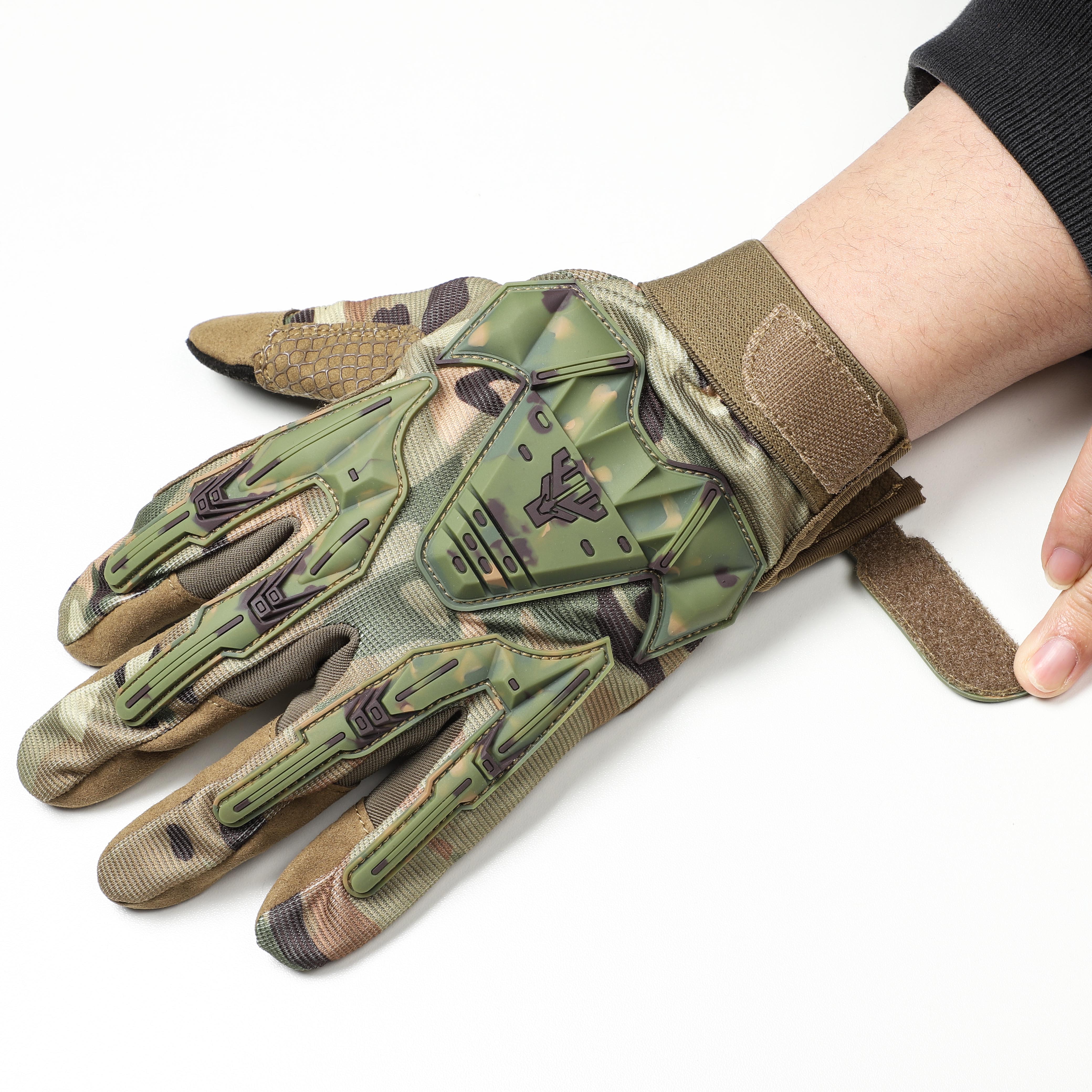
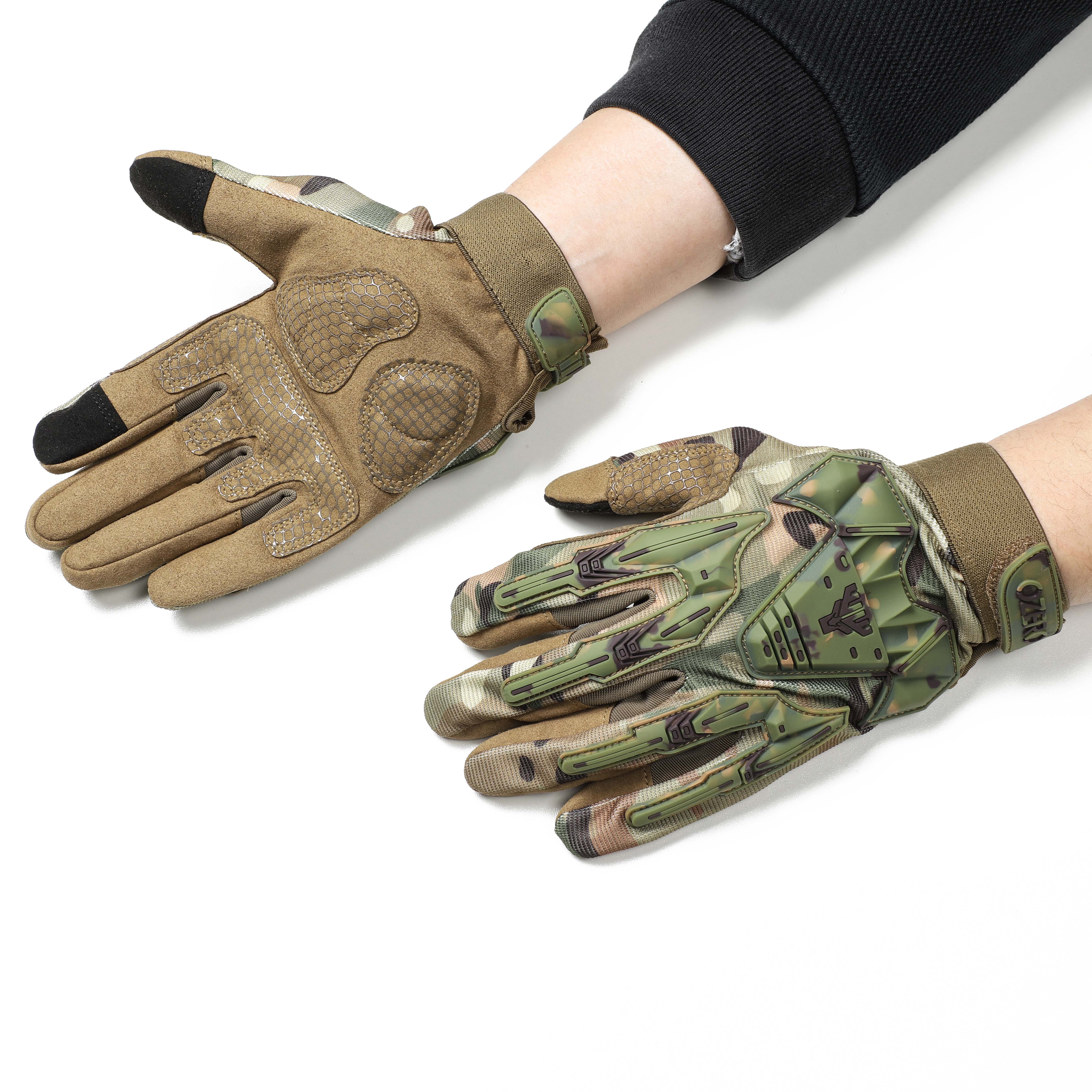
Finally, there is the most important point: matching! Even after finding the perfect pair of tactical gloves, the material is unrivaled and provides any desired function. But if they don't fit your hands, they're useless. Tactical gloves usually lengthen with time and use, so if your glove still has a piece of fingertip growing out, this problem will never be solved (unless you cut the finger part of the glove). Therefore, when choosing gloves, it is best to follow the appropriate palm length instead of paying too much attention to palm width. After all, a little tight is better than too loose, and loose gloves may even fall off during use. But don't put them on too tightly. Too tight gloves will affect the movement of the hands. In the slightest, the thread will collapse and crack, and in the worst case, it will block the blood circulation of the fingers and palms, and the hands will soon become numb, dull, and weak. After buying the gloves, put them on first to use the equipment. If it feels very comfortable and natural, and it is very convenient to use the equipment, then congratulations, you have chosen the right size.
Therefore, unlike the gloves required in ordinary life situations, a pair of tactical gloves not only have protective capabilities, but also require flexibility, comfort, and tactile sensitivity. When you use equipment, you can sensitively perceive The condition of the equipment; when you raise the gun, it can help you hold the gun faster and more stably; when you throw your fist, it can add a BUFF to your fist that increases damage and defense.
After learning the above, then you can get a pair of gloves that suit you now!





